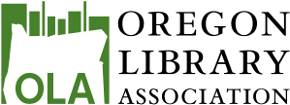|
OASL Position Statement
Characteristics of a Strong School Library Program for the 21st Century
Oregon reading test scores rise with the development of [library media] programs. The relationship between [library media] program development and test scores is not explained away by school differences, such as teacher-pupil ratio, teacher or student characteristics, or per pupil expenditures… nor by community differences related to income levels, poverty status or racial/ethnic demography. (Lance, 2001)
A 21st-century school library is a living, changing classroom with an instructional program and shared resources that are continually refined and enhanced to meet the curricular needs and interests of its students and staff.
A strong school library program:
1. adopts standards for 21st-century learning and articulates a plan for instruction in library skills, information literacy, and integrated technology and for reading appreciation and engagement for all students;
2. ensures equitable access for all students and staff to library resources and the professional instruction and expertise of licensed school librarians;
3. develops and maintains a current and age-appropriate library collection of print and electronic resources in collaboration with district and building teaching staff and students;
4. supports district and building curricula and accommodates diverse learning needs;
5. promotes collaboration between teaching staff;
6. assists in the design of district professional development opportunities related to 21st-century learning; and
7. assures adequate and appropriate staffing for instruction and administration by licensed school librarians and essential operational support by classified staff.
Citations:
Lance, Keith Curry, Marcia J. Rodney and Christine Hamilton-Pennell. Good Schools Have School Librarians: Oregon School Librarians Collaborate to Improve Academic Achievement. Oregon Educational Media Association, 2001.
|
